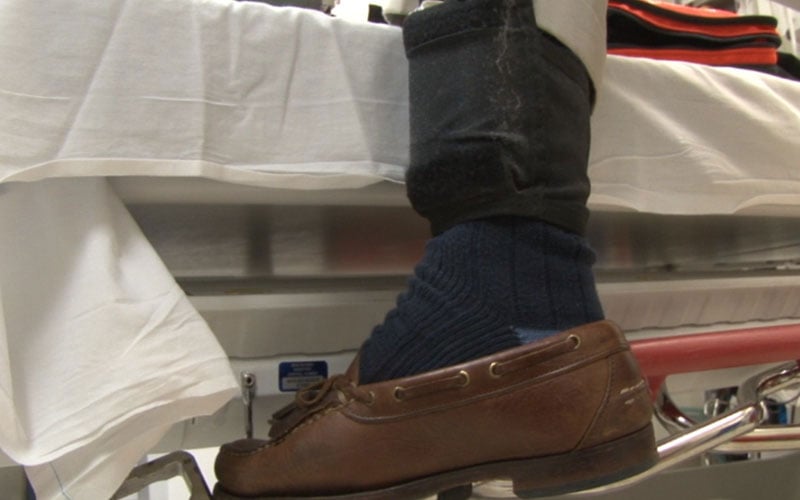PHOENIX – A Phoenix trauma surgeon who treated some victims of the Virginia Tech shooting said anyone can be taught to help save lives after a mass attack like the Orlando massacre.
Dr. Sydney Vail, who oversees the trauma division at Maricopa Medical Center, said people can be trained to administer emergency aid to trauma victims, including applying tourniquets and packing major wounds with gauze.
“How many people went out and learned CPR because they heard that somebody was survived, able to survive, because somebody performed CPR,” Vail said. “It’s the same thing.”
The Department of Homeland Security, through its ‘Stop the Bleed’ campaign, says bystanders are often the first on scene. The website offers instructions on how to control bleeding, tourniquet application and additional resources.
“It really is up to the person if they want to be helpful in these situations,” Vail said. “I guess you have to look deep inside and decide, ‘Am I ready to step out to try and help somebody?'”
In Orlando, where 50 people died, including the gunman who shot people at Pulse nightclub, many of the 53 injured were taken to a nearby trauma center and other hospitals. Ambulances and fire trucks took some of the wounded but relatives and friends also drove the wounded to medical facilities, according to media accounts.

Dr. Sydney Vail, a local trauma surgeon who treated victims of the 2007 shooting at Virginia Tech university, straps a trauma kit to his ankle so he’s ready to help victims in an emergency. (Photo by Alexa Salari/Cronkite News)
Outreach in local schools
Vail said Maricopa Medical Center officials plan to reach out to Arizona high schools and businesses to teach people how to use basic trauma-kit tools. Those kits may include items such as a tourniquet, gloves and combat gauze, like the one Vail carries in a medical holster strapped to his ankle.
Combat gauze, which is available online, helps clot blood.
Vail said trauma kits should be readily available in public places so people can immediately access them.
“They did not have this in Boston. They did not have this at Virginia Tech … having this available will help save lives,” said Vail, referring to the bombings in 2013 at the Boston Marathon and the shootings in 2007 at Virginia Polytechnic Institute and State University.
Vail said while anyone can be trained to help if they are the only people available on scene, medical personnel are best prepared to treat victims of mass shootings.
The Arizona Department of Health Services, Maricopa Medical Center and Phoenix Fire Department are just some of the agencies that have plans to handle trauma patients and mass injuries.
Vail said he’s worked with local emergency medical-service agencies and law enforcement to teach trauma management.
Phoenix Fire adds trauma gear
Phoenix Fire is equipping battalion trucks with new mass casualty kit gear, they have the ability to communicate with local police on the same radio channel and they continue to work with police on training, said Capt. Larry Subervi, Phoenix Fire spokesman.
“If you go back years ago, we had our dispatch system, they had their dispatch system and there was no way for us to be able to connect,” Subervi said. “Now, we have the ability to listen to their radio traffic and get an idea of what it is that they’re doing so that we’re better prepared if they’re bringing out patients to us,” Subervi said.
While firetrucks contain a few emergency kits, Subervi said the department will soon begin stocking its battalion trucks with new trauma gear for incidents of mass violence.
“The design really comes from the stuff the military was using, lessons that have been learned in Iraq and Afghanistan in terms of how to quickly dress and heal battle wounds, prior to being able to get somebody to surgery,” Subervi said.
Phoenix Fire has been working with law enforcement for 2 ½ years on training for mass shootings.
“If something like that were to happen here … we know that we would be able to respond and handle it,” Subervi said.
Vail also said first responders are prepared, pointing out Phoenix has several top-level trauma centers.
“So, God forbid something does happen … we have enough resources here that we should be able to handle a huge mass casualty,” Vail said.